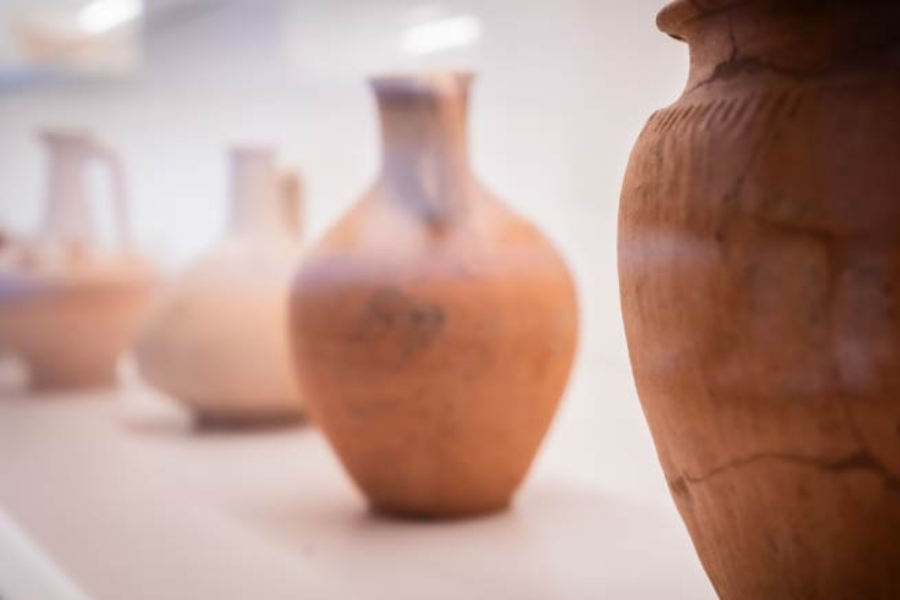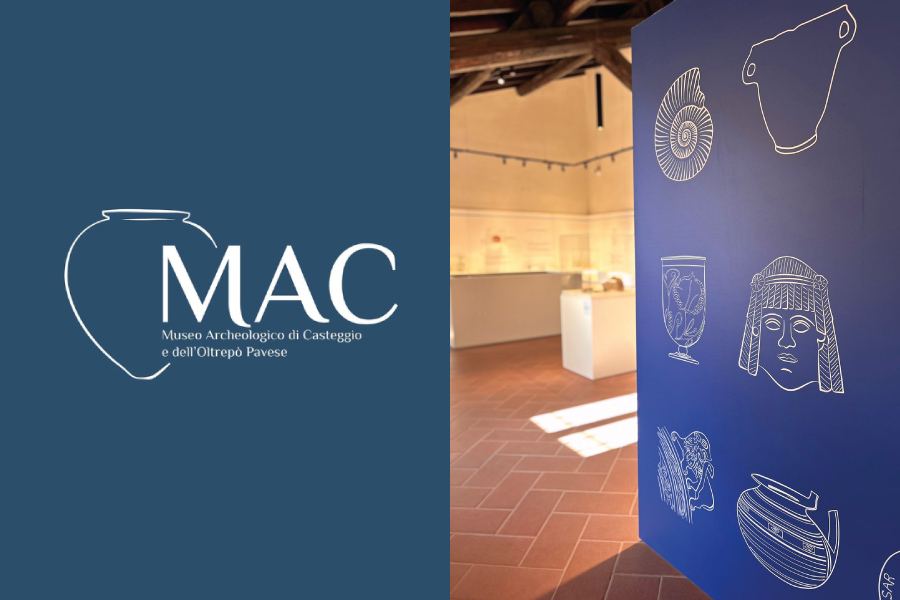Between history and legends: Roman remains, ancient convents and xenodochi in Oltrepò Pavese

In the past, the Oltrepò Pavese was traversed by pilgrims and wayfarers on their way to Bobbio and then on to Rome.
Along the route, welcoming buildings such as hospitales, xenodochi, convents and small hospitals were built to offer shelter, strategic points for resting, care and provisioning.
Cover image taken from the website of MAC – Archaeological Museum of Casteggio and Oltrepò Pavese
Ancient pilgrim reception sites
Among the main places of reception for pilgrims in Oltrepò reported by historical sources are:
- Cagnano House in Varzi
- San Silverio near Trebecco
- Ranzi, near Varzi, where the monastery of San Giacomo was located
- Fonte di San Giacomo, indicated as the source of the Staffora stream
- Vallescura Convent, located near the Scaparina Pass
- Xenodochio di Redavalle, an important stop for pilgrims from Oltrepò Orientale
The Oltrepò and Prehistory
Going back in time, Oltrepò Pavese has its roots in prehistory: the hilly part was generated during the Tertiary era (i.e. the Cenozoic era).
During the Pliocene, sandy marl outcrops were created near Montebello, Torrazza Coste, Casteggio and other areas to the east.
During the Miocene, the mid-hills were formed and the uplift of the Apennines occurred, giving rise to the soils of several localities such as Montù Beccaria, Rovescala and Castana. In addition, areas such as Montalto Pavese and Calvignano originated from deep sea sands. There was therefore sea here.
The Civic Museum of Natural Sciences in Voghera boasts a record: it has a Palaeontology section in which a plesiosaur bone found near Zavattarello (PV) is preserved; it is the only remains belonging to these large marine reptiles found in Italy.
Historical populations
The Oltrepò Pavese was populated by the Ligurians, Celts and Romans.
The Castelliere of Guardamonte
Mount Vallassa, between the Staffora Valley and the Curone Valley, is home to one of the oldest settlements in the area: the Castelliere di Guardamonte. Discovered in 1951, it dates back to theIron Age and is linked to the archaeological culture of Golasecca.
In addition to being an archaeological site, this area is a hotspot for paragliding and free-climbing enthusiasts.
The Roman Legacy
The Oltrepò Pavese territory retains many traces of Romaninfluence, as evidenced by the finds and documents in the Archaeological Museum in Casteggio, where you can immerse yourself in thousands of years of history.
Theancient Via Postumia, today corresponding to the Via Emilia, was a fundamental axis for both trade and the movements of the Roman legions.
Among the artefacts found at the Castelliere di Guardamonte is a Roman bronze statuette depicting Winged Victory, evidence of the temporal and territorial continuity between the Ligurian populations and Roman influence.
Roman Villas
A few years ago, Roman villas were discovered in Rivanazzano Terme. Researchers from the University of Pavia took care of this. During the excavations, in addition to the foundations of the villa, a coin, ceramics and terracottas were also found.
The Roman kiln at Massinigo
One of the most important archaeological finds in the area is the Roman kiln at Massinigo, near Santa Margherita di Staffora. Discovered in 1957 during renovation work on the primary school, it is now one of the best-preserved Roman sites in Lombardy and the only one of its kind in the entireOltrepò Pavese area.
The circular structure of the kiln, with vertical draught, was used for the production of bricks and tiles.
To visit the site, contact the municipality of Santa Margherita di Staffora.
Hannibal’s fountain in Casteggio
The Hannibal Fountain in Casteggio (the then Clastidium) is linked to one of the most famous legends of the area: it is said that the famous Carthaginian leader drank here before the battle of the river Trebbia on 18 December 218 BC in which he defeated the Roman army.
The Vallescura Convent: history and mystery
Travelling along the road from Massinigo to the Scaparina Pass, a pass in the Ligurian Apennines that connects the Staffora Valley and the Trebbia Valley of neighbouring Emilia Romagna, one arrives at the site of the former Vallescura Convent. Today the site houses the Pernice Rossa tourist and sports centre and it is said that the modern structures were built with the stones of the former medieval convent.
The Caves of San Ponzo
Located near San Ponzo Semola, the caves can be reached via a path marked by red and white signs. According to legend, San Ponzo lived here as a hermit.
The cave of the brigands
In addition to the famous Grotta di San Ponzo, another legendary place is the Grotta dei Briganti, which can be reached from the path connecting Fego and Bralello.
According to tradition, the cave offered shelter to brigands who attacked caravans and travellers and then ran to hide with their booty in its depths.
The Oltrepò Pavese is a truly fascinating territory in which legends, archaeological evidence and ancient pilgrimage routes that are still travelled are intertwined.
From the remains of Roman furnaces to mysterious caves via xenodochi and convents: every corner of this land tells a story waiting to be discovered.

 Save your favorite events
Save your favorite events


























